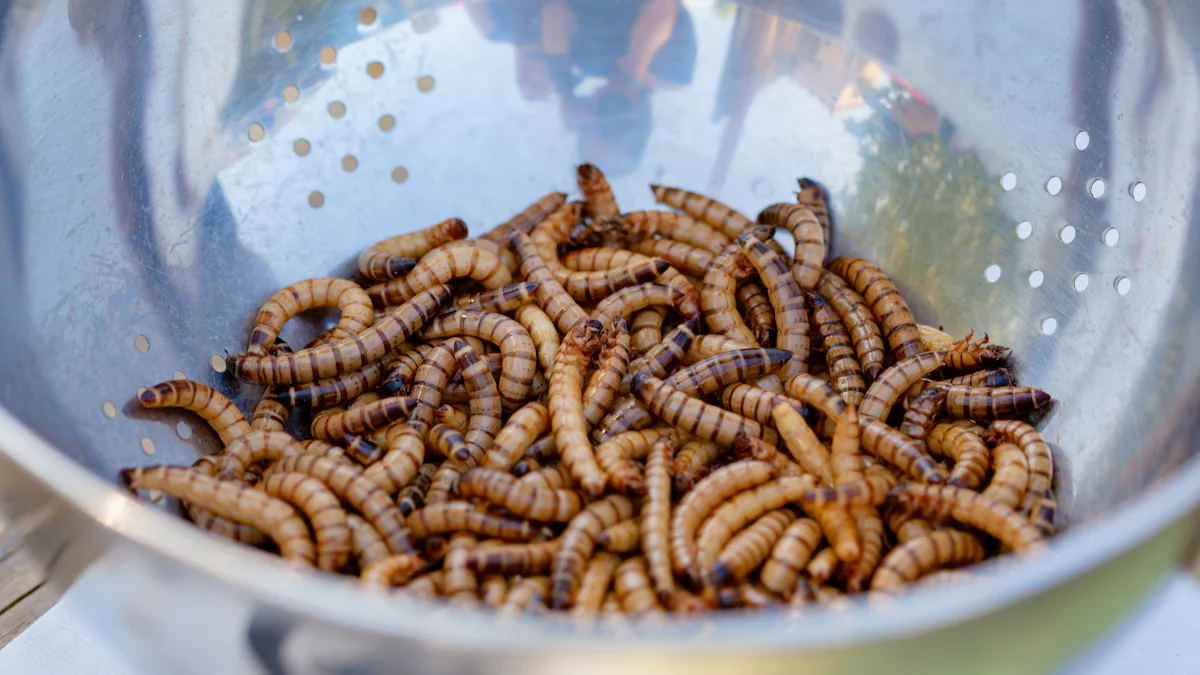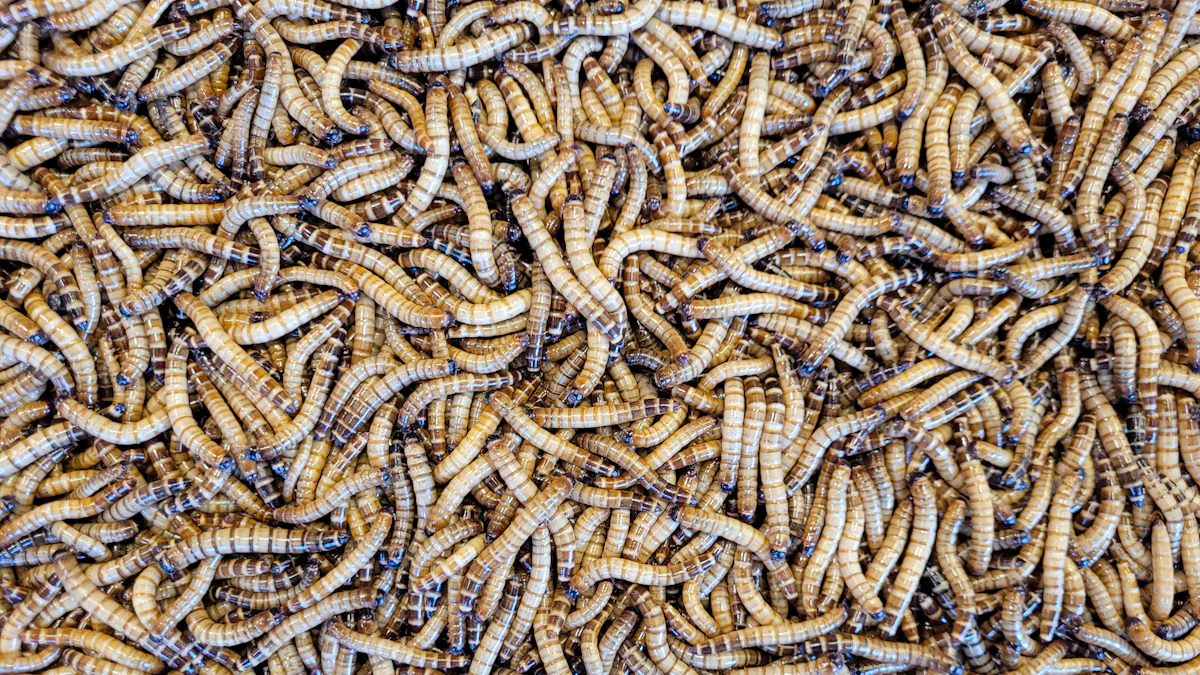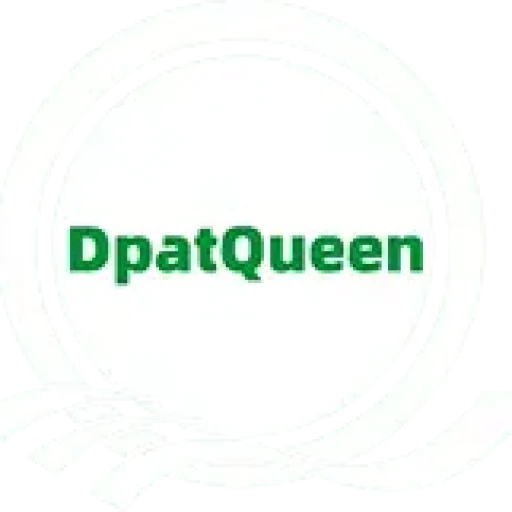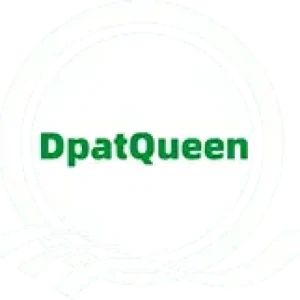
Have you ever wondered how we can make animal nutrition more sustainable? Dried mealworms for animal feed are changing the game. They’re packed with protein—up to 60% by weight—and essential nutrients like omega-3s and B12. Plus, they require less water and land than traditional livestock, making them an eco-friendly choice.
Key Takeaways
- Dried mealworms are a healthy protein source with 50-60% protein. They also have important nutrients, making them great for animal food.
- Using mealworms in animal feed helps the environment. They need less water and land and make fewer harmful gases.
- Mealworms turn food waste into protein, helping farms recycle. This supports a more eco-friendly food system.
Dried Mealworms for Animal Nutrition: A Sustainable Solution
Nutritional Value and Benefits
You might be surprised to learn just how nutritious dried mealworms are. They’re packed with 50-60% protein by weight, making them a powerhouse for animal feed. This protein is loaded with essential amino acids that support growth and reproductive health in animals. Plus, dried mealworms offer healthy unsaturated fats, which provide energy and promote overall wellness. They’re also rich in B vitamins, especially B12, and minerals like iron, zinc, and magnesium. These nutrients make them a complete package for animal nutrition.
What’s even more impressive? Dried mealworms efficiently convert food waste into edible protein. This means they’re not just good for animals—they’re good for the planet too.
Environmental Impact and Sustainability
When it comes to sustainability, dried mealworms for animal feed are a game-changer. They require significantly less water, land, and feed compared to traditional livestock. For example, mealworm farming uses 70% less agricultural land and produces 23% fewer greenhouse gas emissions than broiler production. They can even be grown on organic waste, reducing food waste and promoting recycling in agriculture.
By choosing mealworms, you’re helping to lower the carbon footprint of animal nutrition. It’s a small change that can make a big difference for the environment.
Comparison with Traditional Feed Ingredients
How do dried mealworms stack up against traditional feed ingredients like soy or fishmeal? They’re not just nutritionally comparable—they’re often better. Mealworms contain more protein and essential amino acids than soy. They also have a feed conversion ratio (FCR) as low as 2.2, which is far superior to cattle’s average FCR of 8.52. This means mealworms produce more protein with less feed.
On top of that, mealworms have a much lower ecological impact. They use fewer resources and produce fewer emissions, making them a sustainable alternative to traditional feed options. If you’re looking for a way to improve animal nutrition while protecting the planet, mealworms are the answer.
Applications of Dried Mealworms in Animal Feed

Livestock Feed Integration
You might wonder how dried mealworms fit into livestock feed. They’re a great protein source, but there are challenges. Regulatory restrictions limit the use of processed animal protein from insects in some livestock. Plus, mealworms contain chitin, a type of fiber that’s tough for many animals to digest. This can reduce the nutritional value of the feed. Despite these hurdles, researchers are exploring ways to process mealworms to make them more digestible and compliant with regulations. With these advancements, you could see mealworms becoming a staple in livestock diets.
Aquaculture and Fish Farming
Fish farming is another area where dried mealworms shine. They’re packed with 45-60% protein, essential fatty acids, and minerals like phosphorus and potassium. These nutrients are vital for fish health and growth. Mealworms also contain chitin, which promotes gut health by supporting beneficial gut bacteria. This improves nutrient absorption and digestion. By using mealworms in aquaculture, you’re not just feeding fish—you’re boosting their overall health.
Pet Food Innovations
Pet food companies are getting creative with dried mealworms. Products like EntoPro Flakes 67® and EntoPro Smoothie 17® use mealworms to enhance flavor and nutrition. Buffalo mealworms, with their mild flavor and crunchy texture, are especially popular. Research shows dogs prefer mealworms over other insects, making them a hit in pet food. If you’re a pet owner, you might already see mealworm-based treats on store shelves.
Industry Adoption and Market Trends
The market for dried mealworms is growing fast. In 2023, the mealworm feed market was valued at $0.18 million and is expected to grow at a CAGR of 26.20% through 2030. The dried mealworm market is also projected to grow at a CAGR of 12.9% from 2024 to 2031. This growth is driven by the demand for sustainable protein sources. Aquaculture and pet food sectors are leading the way, showing how mealworms are becoming a key player in animal feed.
Challenges in Scaling Dried Mealworms for Animal Feed
Production Costs and Scalability
Scaling up the production of dried mealworms for animal feed comes with its own set of challenges. One of the biggest hurdles is the high production cost. A significant portion of this cost comes from feed supply and rearing. For instance, feed production, especially from lucerne, accounts for 44% of the total cost due to the energy-intensive drying process. Rearing mealworms adds another 49%, as heating facilities are essential to maintain optimal temperatures, particularly in colder regions. Here’s a breakdown of the primary cost factors:
| Factor | Contribution to Costs (%) | Description |
|---|---|---|
| Feed Supply | 44% | Significant energy used for feed production, particularly from lucerne, which requires high energy for drying. |
| Rearing | 49% | Major energy consumption from heating facilities, especially in colder regions, impacting overall costs. |
| Environmental Conditions | N/A | Colder temperatures in mountainous regions increase heating demands, contributing to higher production costs. |
To address these challenges, innovative technologies are being adopted. Automated climate control systems help maintain ideal growth conditions, boosting efficiency. Advances in breeding techniques have also led to faster-growing and more resilient mealworm strains. These developments are paving the way for more cost-effective and scalable production.
Regulatory Approvals and Standards
Regulatory hurdles can slow down the adoption of dried mealworms in animal feed. Different regions have varying food safety regulations, labeling requirements, and feed standards. For example, the European Union allows processed animal protein (PAP) from mealworms in aquaculture feed under Commission Regulation (EU) 2017/893. However, stricter rules like Regulation (EC) 999/2001 restrict their use in ruminants due to past disease outbreaks. Here’s a quick look at some key regulations:
| Regulation | Description |
|---|---|
| Commission Regulation (EU) 2017/893 | Authorizes the use of processed animal protein (PAP) from specific insect species, including mealworms, for aquaculture feed. |
| Regulation (EC) 999/2001 | Restricts the use of insect PAPs in ruminants due to TSE outbreaks. |
| Regulation (EU) 1017/2017 | Allows dried or frozen whole insects for livestock feed, excluding live insects unless permitted by national legislation. |
Countries with stricter environmental policies are more likely to adopt insect-based feeds. However, developing nations with less stringent regulations may lag behind, slowing global market growth.
Overcoming Consumer Perception Barriers
Consumer perception plays a huge role in the success of dried mealworms for animal feed. Many people are hesitant to accept insects as a viable feed ingredient due to unfamiliarity or cultural biases. Research shows that consumers are more open to mealworms when they’re incorporated into familiar products in a way that makes the insects less visible. For example, savory flavors in pet food or aquaculture feed have been more successful than sweet options.
Education is key to overcoming these barriers. By highlighting the environmental and nutritional benefits of mealworms, you can help shift public opinion. Companies like Taiyo Feed Mill Pvt Ltd have already made strides with products like “BUGS IN,” which align with the natural diets of fish and turtles. Expanding product offerings and addressing cultural perceptions can further ease consumer resistance.
The Future of Dried Mealworms in Animal Nutrition
Technological Advancements in Mealworm Farming
Technology is making mealworm farming more efficient than ever. Automated climate control systems now regulate temperature, humidity, and light, creating the perfect environment for mealworms to thrive. These systems reduce energy waste and ensure consistent production. Breeding techniques have also improved. Scientists have developed mealworm strains that grow faster and resist diseases better. These advancements mean you can expect higher yields with fewer resources.
Genetic optimization is another game-changer. It’s helping farmers produce mealworms with enhanced nutritional profiles. This makes them even more valuable as a protein source. With these innovations, mealworm farming is becoming more scalable and cost-effective, paving the way for widespread adoption.
Regional Market Growth and Global Expansion
The dried mealworm market is booming, especially in North America. You’ll find the United States leading the charge, thanks to growing demand for sustainable protein. Changing attitudes toward insect-based feeds are driving this growth. North America is expected to see the highest compound annual growth rate (CAGR) through 2030. Consumers are embracing mealworms as an eco-friendly alternative to traditional protein sources.
Globally, the market is expanding for several reasons. Sustainability concerns are pushing governments to support insect farming. Rising protein demand and innovations in food products are also fueling growth. The pet food industry, in particular, is adopting mealworms for their high nutritional value. This global shift shows how mealworms are becoming a key player in the future of animal nutrition.
Contribution to Sustainable Agriculture Practices
Mealworms are a sustainability superstar. They efficiently convert food waste into protein, reducing agricultural waste. Farming them requires far less land, water, and feed compared to traditional livestock. You can even raise mealworms on organic waste, promoting recycling in agriculture. Their low ecological impact makes them a smart choice for sustainable farming.
Long-term, mealworms could revolutionize agriculture. Their feed conversion ratio (FCR) is as low as 2.2, far better than cattle’s average of 8.52. This means you get more protein with fewer resources. By incorporating mealworms into feed, you’re helping lower the carbon footprint of farming. It’s a small change with a big impact on the planet.
Dried mealworms bring incredible benefits to animal nutrition. They’re packed with protein, essential nutrients, and healthy fats, making them a powerhouse for growth and health. Their environmental advantages are just as impressive. Mealworms use less water and land, produce fewer emissions, and even recycle food waste into protein.
Here’s why they could revolutionize the industry:
- They enhance growth and meat quality in livestock.
- They provide natural, digestible protein for pets.
- They boost immune systems and growth rates in aquaculture.
You can see how mealworms check all the boxes for sustainability and innovation. With a market growing at 26.20% annually, now’s the time to invest in this game-changing solution. Let’s explore their potential and make animal nutrition better for the planet—and for you.
FAQ
What makes dried mealworms better than traditional protein sources?
Dried mealworms pack more protein and essential nutrients than soy or fishmeal. They’re eco-friendly, using less water, land, and feed while producing fewer emissions. 🌱
Can you feed dried mealworms to all animals?
Not all animals can digest mealworms easily due to chitin. Researchers are working on processing methods to make them suitable for more species.
Are dried mealworms safe for animal feed?
Yes! Regulatory bodies like the EU approve mealworms for aquaculture and livestock feed. Always check local regulations for specific guidelines. ✅
Tip: Start small when introducing mealworms into animal diets to ensure compatibility and acceptance.


